SUNDAY JOINT, 3-30-2025: STEPPING OUT OVER THE LINE WITH CARL "TINKER" WEST

Hey All,
Today we connect our two recent Sunday Joint shipwreck stories—Dominator at Lunada Bay, Amaryllis at West Palm Beach—and do so with a thundering rock soundtrack no less, so let's raise the Jolly Roger and give a warm piratical EOS welcome to Carl "Tinker" West.
Boomers of a certain age (60-plus), gender (male), place (Jersey), and musical taste (Boss) will be familiar with West for two reasons. First, he owned and ran Challenger Eastern Surfboards from the mid-1960s to the early '70s. I recall as a surf-mag-devouring kid being confused by the fact that there was a Challenger Surfboards in San Diego, and a Challenger Eastern Surfboards in . . . the East. Us young beach lords of Los Angeles County were as geographically backward as we were snobby, so "East" meant anything between Miami and those little tiny cold states up in the corner. Carl West, a red-haired super-high-IQ UCLA Physics grad who did defense work in the '50s before going full surf bohemian, was a Challenger Surfboards shaper who in the mid-'60s became part owner of the company. Expansion to the East Coast, which was surf-booming hard at the time, seemed like an obvious next move to Carl, but the other owner didn't agree, so the two men decided to split the Challenger assets and share the name, and in 1966 West drove to New Jersey where he founded Challenger Eastern, in Neptune Township. That's West, below, second from the left, barefoot and planer at the ready, about a year after arriving in Jersey.
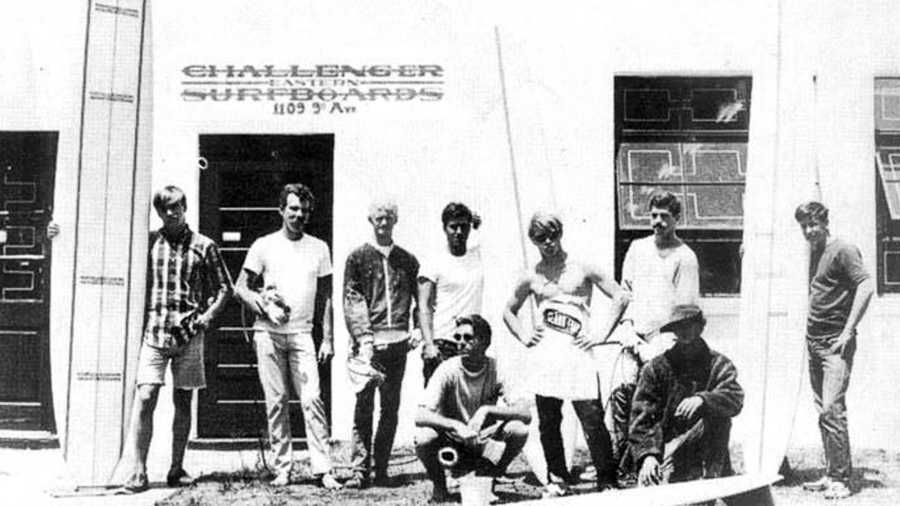
I'll pause here to say that, after spending a few weeks on and off looking into West's life and career, I'm still not entirely sure where his real talents lay. Decent surfer, nothing special. Amazing hands and a relentless curiosity about all things related to mechanics and building: West could make a board start to finish, quickly and perfectly; "Tinker," a nickname since childhood, comes from the fact that he could pull apart and reassemble virtually anything. Challenger Eastern, furthermore, became a pillar of the small but hardcore year-round New Jersey surf scene, meaning 50 finished boards a month at its peak, which is solid but not GMC. So why was Tinker a first-vote inductee into the New Jersey Hall of Fame? A newspaper article on West described him as a "behind-the-scenes genius renowned not so much for what he has done himself as for the support and creative spark he ignited in others," and this is always what comes up when people talk about him—the magnetism, the freeform thinking, the possibility that any day could produce a new idea, new plan, new adventure. West attracted talented like-minded people, and during his early years at Challenger Eastern he was joined over the summers by a talented LA-born teen surfer named Michel Junod, who learned to shape at the Challenger Eastern factory and later moved to Santa Cruz to launch a boardmaking career that continues to this day. Peripatetic surfer-shaper and East Coast Surfing Hall of Famer Jim Phillips (below) was also a West protégé, around the same time as Junod. Both would become better-known boardmakers than West, but both have always been quick to credit him for setting their respective career paths.
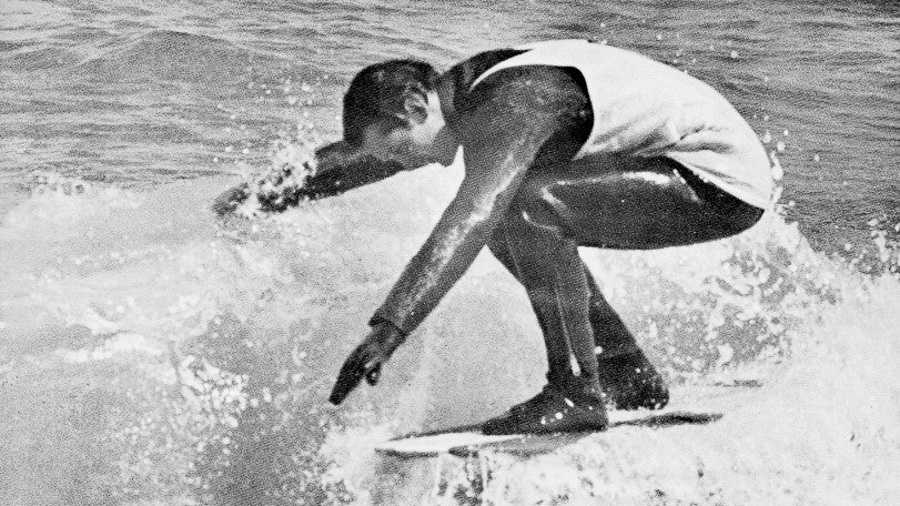
Let's pause further and scroll back to 1961, when West was still living in LA County. On March 17, four days after Dominator ran aground at Lunada Bay, the leading front-page headline in the Long Beach Independent read: "3 Board Doomed Ship; Saved by Copter," and there, bare-chested and staring straight at you in a five-column-wide photo is young Carl West, still damp and in trunks, possibly in a paddy wagon, with three other Dominator-curious friends. They were part of a larger group who swam, through heavy surf and gusting wind, from the beach to the wreck. Three (West included) were air-lifted from the ship's deck, two more were arrested on the beach, three others jumped ship, swam back to the beach, scattered, and got away. Bail for each of those arrested and charged with "entering a disaster area" was $525. I can't find a follow-up story and don't know if the charges stuck. Smart money says Tinker skated.
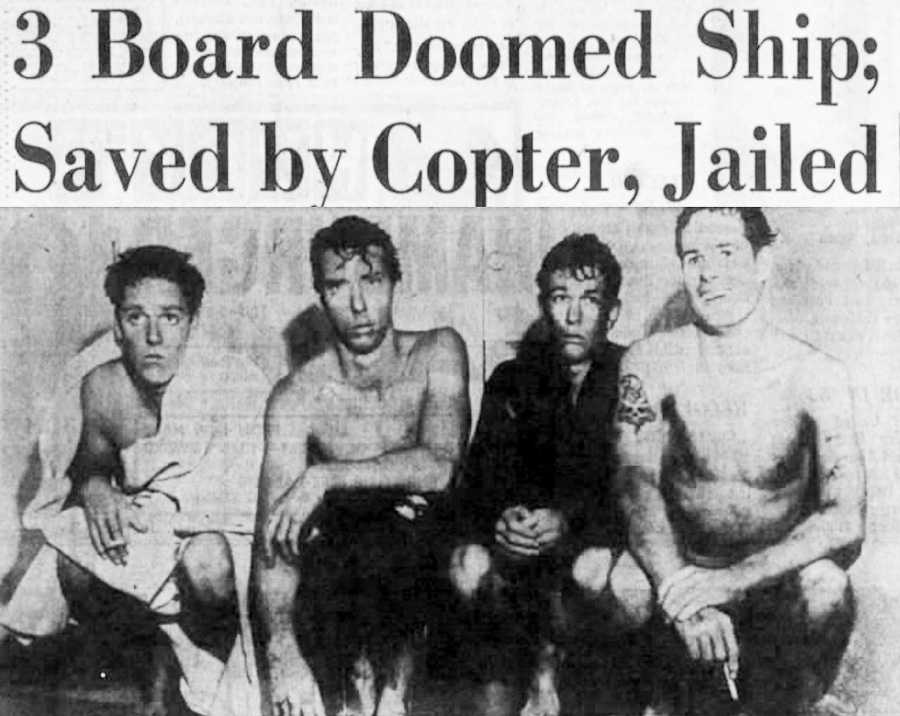
The point is, I would bet my upcoming luxe surf jaunt to Costa Rica that Tinker scaled Dominator partly for the adventure of it, and partly to drop below decks to stare at and likely caress the heavy machinery of an actual freighter.
Now we jump ahead to 1969, and the newly-located Challenger Eastern Surfboards (the first one burned to the ground a few months earlier), which West had turned into a multipurpose space featuring a garage and a rehearsal space, along with a boardmaking factory. Local bands are using the rehearsal space almost around the clock, and the best of the bunch is Steel Mill, featuring a newly-arrived 19-year-old longhaired singer-guitarist from Freehold named Bruce Springsteen. Everything was pretty loose at this point in terms of work, recreation, living arrangements, but Bruce was more or less crashing at the Challenger Eastern factory at night (soon to relocate to its most famous address, on Bay Avenue in Highland Park), surfing in the mornings, doing odd jobs around the shop in the afternoon, then jamming in the rehearsal space or playing gigs set up by West, who had become Steel Mill's manager. This is the second thing people know about him.
In late 1971, West introduced Springsteen to producer-manager Mike Appel, who in turn arranged an audition with Columbia Records, which led to Springsteen and his newly-named E Street Band recording their debut LP. Appel would continue to manage and produce Springsteen. "I couldn't take him further," West later said. "There were no hard feelings and we still talk on occasion." (Springsteen later said of West: "He was ten years older and in twice as good shape as anyone in the band, he rode herd on the surfboard factory like the big kahuna he was.”)
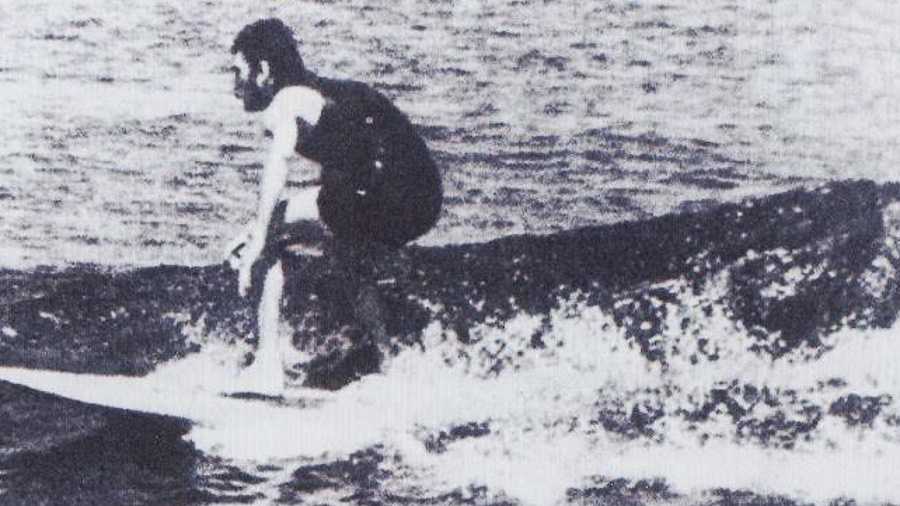
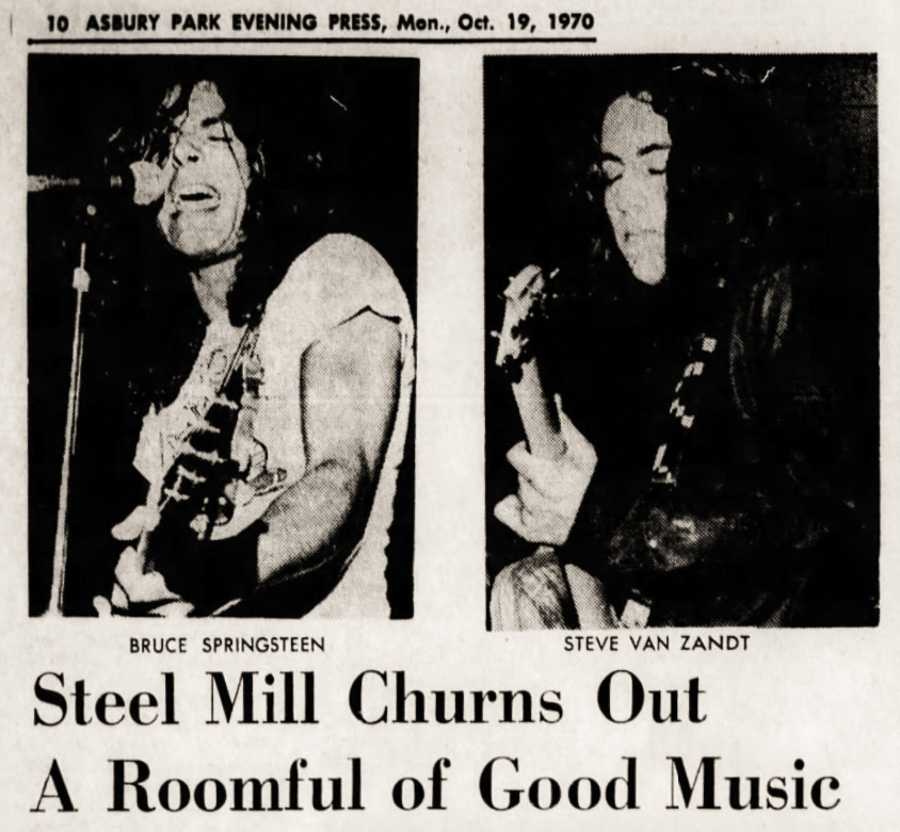
Challenger Eastern Surfboards folded around the time Bruce began touring nationally, and West began a long career of freelance sound engineering while carrying on with his beloved neighborhood quirkiness. "Every town has its cast of characters," one local resident later said of West. "In Highlands, Tinker is our entire cast."
But back to the shipwrecks. Is there any way in the world that West, at some point between 1966 and 1968, didn't throw a board in his truck and gun down I-95 on a last chance power drive to West Palm Beach to climb aboard Amaryllis for fun and a bit of freestyle misdemeanor looting?
Thanks for reading and see you next week.
Matt
PS: Here is "The Ballad of Jesse James" by what was then called the Bruce Springsteen Band, recorded at Challenger Eastern, in 1972, with Tinker West doing the sound engineering. I didn't lose my shit for Bruce like a lot of my pals did, but The River would have been Top Five in my most-listened to LPs of 1981 (above East Side Story, below Get Happy! and Dirty Mind), and while I will always try and impress you by bringing up the fact that I saw the Costello-Rockpile-Mink DeVille show at Hollywood High in '78 (front row—suck it, Robert Hilburn!) the boring truth is that the Springsteen arena shows I went to in the early- and mid-1980s with every other white male boomer in America were hands down the best live shows I've ever seen. Born in the USA didn't grab me, Tunnel of Love even less so, and after that I tapped out. My admiration for Bruce as a person, for his principles and politics and humor, has gone up and up over the years, but for reasons I cannot explain the songs no longer move me. Squeeze, Elvis Costello, Prince, Willy DeVille—just the opposite, I have no great interest in them as people, but still very much love the tunes.
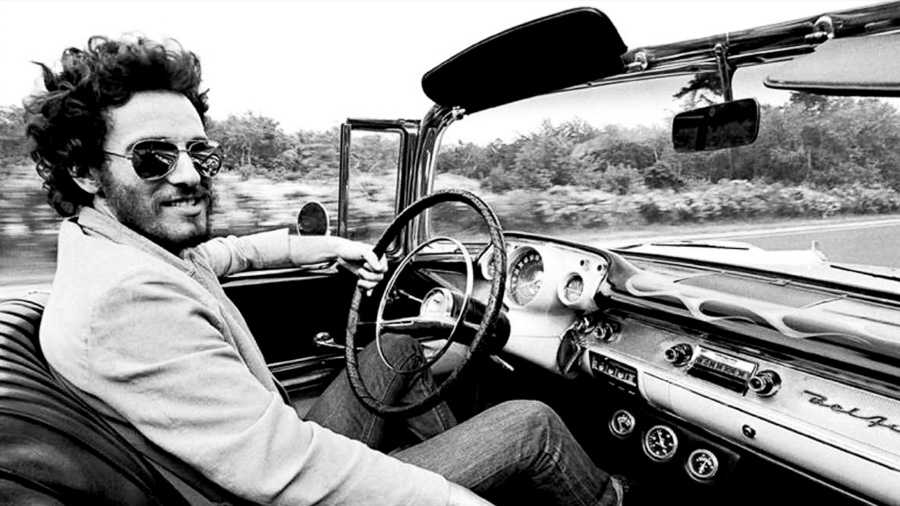
PPS: I appreciate Springsteen all the more because he once said that, before rock stardom, "the only things I gave a damn about were girls, cars, and surfing." Fantastic quote except apparently Mr. Racing in the Street never actually himself got behind the wheel until he was 20 years old, driving west to California for the first time, with Tinker West white-knuckling in the passenger seat. "My driving sucked," Bruce later said. "We were lucky I didn’t kill us."
PPPS: Last word goes to Clarence Clemons, Bruce's longtime sax player and on-stage foil: "In 1973 I surfed often and I surfed pretty well. So did Bruce and all the other guys in that famous David Gahr photograph on the back cover of The Wild, the Innocent & the E Street Shuffle. In fact, we had been out surfing that day. We knew we had this photo shoot so we wanted to go inside and change. But Dave said. 'No, you look great like this,' so we ended up taking those pictures and then we went back out surfing. You can feel summer when you look at that picture. You can feel the Jersey Shore. Everybody looks young and fit and sun-kissed. We all have that relaxed summertime attitude."
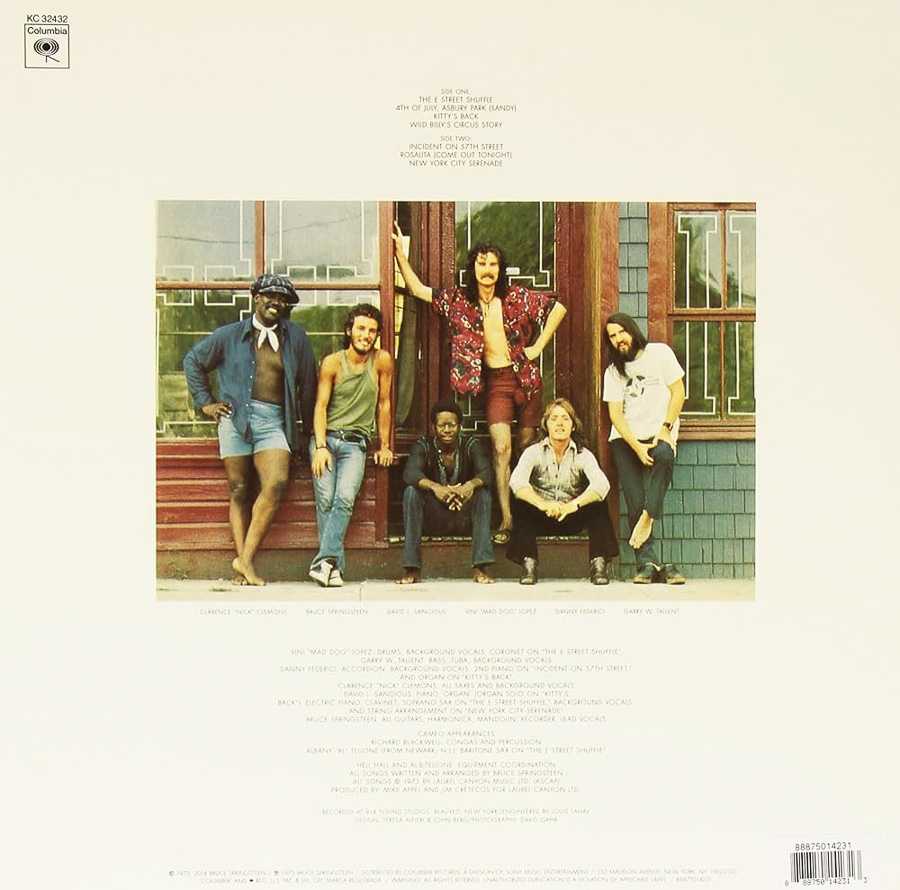
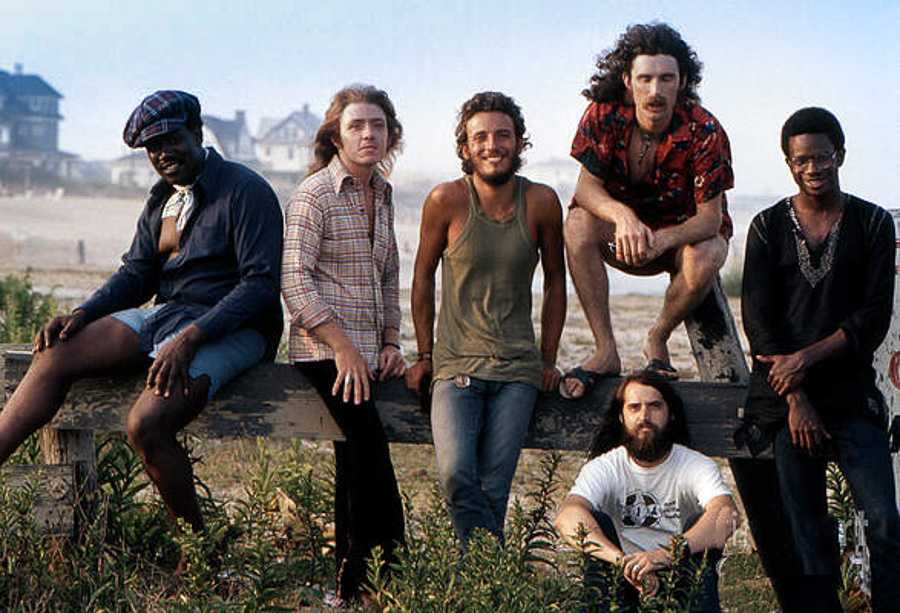
[Photo grid, clockwise from top left: Steel Mill handbill, 1970; Butch Yamashita surfing, detail from a 1967 Challenger Eastern magazine ad; Bruce Springsteen on the Jersey Shore in 1973, photo by David Gahr; 16-year-old Springsteen plays with his first band, the Castiles, at the Surf 'n Sun Beach Club, in 1966; Carl West at the third and final Challenger Eastern Surfboards shop, around 1971; family vacation photo at Rutledge Hotel, with Amaryllis wreck in the background. Challenger Eastern factory crew around 1967. Jim Phillips, Belmar, NJ, 1966. Long Beach Independent headline and photo, 1965. Springsteen surfing, around 1972. Asbury Park Press review for 1970 Steel Mill show. Bruce on the road, mid-1970s. Back cover of The Wild, the Innocent & the E Street Shuffle, photo by David Gahr. Out-take, same day, same photographer, but on the beach.]